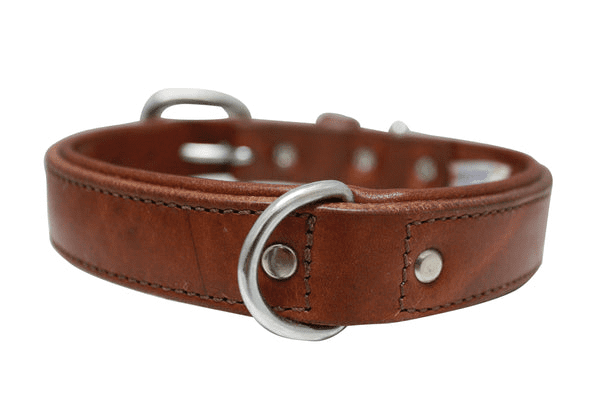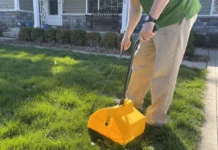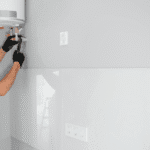Last Updated on April 16, 2024 by admin
In the world of pet care, ensuring your dog’s safety is important, and selecting the right leash plays a significant role. Braided dog leashes stand out as a reliable option, offering durability and control. Here are some tips to secure your furry friend with the ideal braided leash:
Table of Contents
Understand Your Dog’s Needs
Before selecting a leash, consider your dog’s size, breed, and behavior. Larger breeds may require thicker, sturdier braided leashes for better control, while smaller dogs might do well with lighter ones. Additionally, consider your dog’s behavior; if they tend to pull or lunge, you will need a leash with excellent tensile strength.
Material Matters
Braided Leashes are commonly crafted from nylon, leather, or a combination of materials. Nylon braided leashes offer strength and flexibility, making them ideal for active dogs. Braided Dog Leashes provide durability and a classic look, though they may require more maintenance. Assess the pros and cons of each material based on your dog’s activities and your preferences.
Check for Quality
Quality is non-negotiable when it comes to your pet safety. Inspect the braiding pattern and the overall construction of the leash. Ensure that the braids are tight and evenly distributed, as loose braids can compromise the leash’s strength. Look for reinforced stitching and sturdy hardware, such as clasps and D-rings, to guarantee longevity.
Length Matters
Braided leashes come in various lengths to accommodate different activities and training needs. Standard lengths range from 4 to 8 feet. Shorter leashes offer more control, making them suitable for crowded areas or training sessions. Longer leashes provide freedom of movement during walks or outdoor activities. Choose a length that aligns with your dog’s training requirements and your preferred walking style.
Handle with Care
Pay attention to the leash handle, as it directly affects your comfort and control. Opt for a Strong Dog Leash with a padded por cushioned handle to prevent discomfort and reduce the risk of rope burn, especially during extended walks. The handle should also be comfortable to grip, offering a secure hold without causing strain on your hands.
Reflect on Safety
Safety features are essential, especially for walks in low-light conditions. Look for braided leashes equipped with reflective threads or strips that enhance visibility, keeping you and your dog safe during evening strolls or early morning outings. Reflective elements ensure that you remain visible to passing vehicles and pedestrians, reducing the risk of accidents.
Consider Climatic Conditions
Climate can impact the choice of leash material. For example, nylon braided leashes are suitable for all weather conditions due to their resistance to moisture and mildew. On the other hand, leather braided leashes may require conditioning to maintain their integrity in humid or rainy environments. Choose a leash material that can withstand the climate in your area and the activities you engage in with your dog.
Test Before Use
Before venturing out with your dog, take time to familiarize yourself with the braided leash. Practice attaching and detaching the leash, adjusting the length, and maintaining control over your dog’s movements. This ensures that you’re prepared to handle any situation effectively while minimizing the risk of accidents or escapes.
Inspect Regularly
Regular inspection is key to ensuring the safety and longevity of your braided leash. Check for signs of wear and tear, such as fraying, unraveling, or damaged hardware. Replace the leash if you notice any compromising factors to prevent accidents or injuries during walks. Additionally, clean the leash periodically to remove dirt, debris, and odor, preserving its quality over time.
Train with Patience
Introducing a new leash for your dog requires patience and positive reinforcement. Use treats and praise to associate the leash with positive experiences, gradually introducing it during short training sessions indoors before progressing to outdoor walks. Encourage good behavior and discourage pulling or tugging by redirecting your dog’s focus and rewarding calm, controlled behavior.
Invest in Training
Along with choosing the right dog leash, investing time in training your dog is invaluable. Training instills discipline, strengthens the bond between you and your pet, and enhances safety during walks. Teach basic commands such as “sit,” “stay,” and “heel” to establish control and responsiveness, reinforcing these commands consistently during leash training sessions. Use positive reinforcement techniques, such as treats and praise, to encourage desired behaviors and correct any leash-related issues effectively.
Monitor Your Dog’s Comfort
Pay attention to your dog’s comfort and behavior while using the braided leash. Watch for signs of discomfort, such as excessive pulling, rubbing, or reluctance to walk, which may indicate that the leash is causing discomfort or irritation. Adjust the fit or consider switching to a different leash style if necessary to ensure your dog’s comfort and well-being during walks.
Final thoughts
Securing your dog with the right braided leash involves careful consideration of various factors, including size, material, quality, and safety features. By understanding your dog’s needs and preferences, selecting a top quality leash, and practicing proper handling techniques, you can ensure a safe and enjoyable walking experience for both you and your furry companion.
















